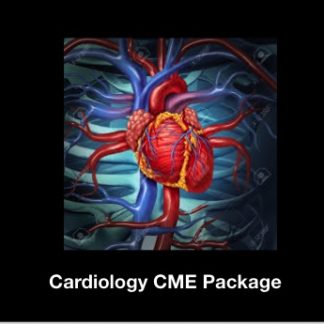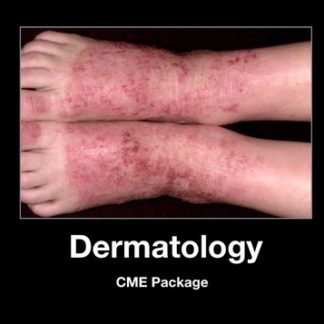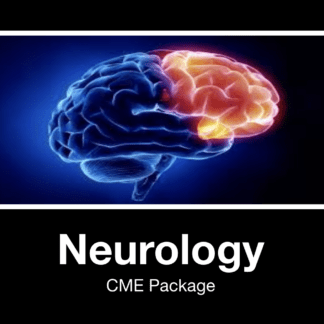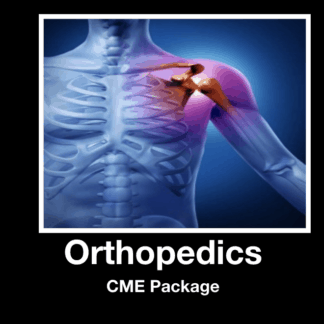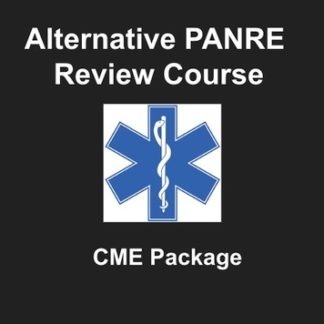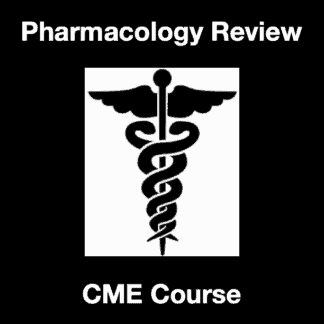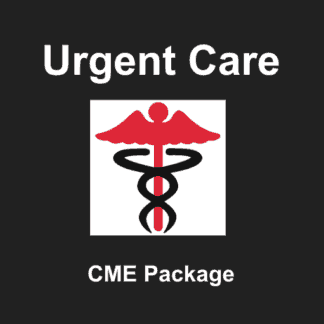EENT Blueprint Preview and Video
This is a free preview of the EENT Section of the PANCE/PANRE course. The full course has 181 questions and a lecture video (1:32:03)
EENT Lecture Slides Preview
Title: EENT Lecture Slides Preview
Details of the Slide Show Covers: These lecture slides are a preview of the full Section of the NCCPA Blueprint for the PANCE and PANRE. These slides contain a small part of the content from the eye disorders section.
Total Length: 16 slides
Full Presentation Can Be Accessed: Lecture Slides
EENT Questions (10 Questions)
Title: EENT Questions Preview
Details of the Slide Show Covers: These qustions are a preview of the full Section of the NCCPA Blueprint for the PANCE and PANRE. The full Section Contains 181 PANCE Style questions, answers, and detailed explanations.
Total Length: 20 slides
Full set of questions can be accessed: Questions, Answers, and Explanations
EENT Lecture Video Preview
Title: Lecture Video Preview
Details: This video is a preview of the full video for the PANCE and PANRE.
Total Length: 9 minutes and 17 seconds. Full video is 1 hour and 32 minutes.
Full Video Can Be Accessed: Eyes, Ears, Nose, Throat PANCE/PANRE Blueprint Lecture Video
EENT Blueprint Preview Lecture Notes
EENT Blueprint
PANCE Blueprint
Eye Disorders
Blepharitis
Blepharitis is characterized by inflammation of the eyelids
There is anterior and posterior blepharitis
Anterior is characterized by inflammation of the base of the eyelashes. Less common than posterior
Posterior is characterized by inflammation of the inner portion of the eyelid, at the level of the meibomian glands.
Blepharitis
Can cause colonization of staphylococcal organisms
Can be associated with Rosacea and Seborrheic Dermatitis
Typically patients will have red eyes, a gritty sensation, excessive tearing, eyes may burn, swollen erythematous eyelids, crusting, and photophobia.
Lid hygiene is important for treatment
Blepharitis
Warm compresses can be helpful
Topical antibiotics such azithromycin, erythromycin, or bacitracin may be helpful in reducing bacterial load of the lashes
Oral antibiotics such as tetracycline for severe cases of blepharitis
Blowout Fracture
Blowout fractures of the eye are fracture of the floor of the orbit
Typical mechanism is getting hit with a round object
May causes entrapment of the inferior rectus muscle
Ischemia may cause loss of the muscle function and result in edema or hemorrhage of the muscle
Blowout Fracture
Enophthalmos (the eyeball receded into the orbit) may develop when the globe is displaced posteriorly
Injury to the inferior orbital nerve may result from this causing sensory loss in that distribution
Cataract
Leading cause of blindness in the world
It is an opacity in the lens of the eye that can cause total or partial blindness
Embryonic development and lifelong growth of the lens produce a complex layering of cells
The lens does not shed its nonviable cells and this causes degenerative effects on its own cell structure leading some opacity problems
Cataract
Risk factors for acquired cataracts are: age, smoking, alcohol, sunlight, metabolic syndrome, diabetes, statins, and long term use of high dose steroids
No convincing evidence that vitamin supplementation decreases incidence
Only treatment is surgical correction
Chalazion
Chalazion is an inflammatory lesion that develops when the meibomian tear gland becomes obstructed
May first present as eyelid swelling and erythema, then evolve to a nodular rubbery lesion
Commonly seen in patients with blepharitis and rosacea
Antibiotics are not indicated
Chalazion
Frequent hot compresses are effective
Most of the time not painful or tender
Symptomatic patient scan be referred to ophthalmology for incision and curettage or steroid injection
Conjunctivitis
Conjunctivitis is inflammation of the conjunctiva. Can be infectious or non infectious
Conjunctiva is usually transparent and gets red when inflamed
Infectious can be viral or bacterial
Non infectious can be allergic or non allergic
Bacterial typically caused by strep pneumonia, staphylococcus aureus, haemophilius influenzae, and moraxella catarrhalis
Conjunctivitis
Can be caused by neisseria gonorrheae and chlamydia
Viral is usually adenovirus
Allergic conjunctivitis is caused by airborne allergens contacting the eye that cause mast cell degranulation
Itching is the cardinal symptom for allergic conjunctivitis
Can be non allergic from chronic dry eye
Contact lens wearer need to throw away contacts and irrigation solution and case
Bacterial conjunctivitis include erythromycin ointment or polytrim drops.
Conjunctivitis
Can also use sulfacetamide, azithromycin drops or bacitracin ointment
Ciloxin needed for contact lens wears in bacterial conjunctivitis because of pseudomonas prominence
For allergic conjunctivitis can use OTC decongestants, antihistamines, and patanol.
Students must receive topical therapy 24 hours before returning to school
Corneal Abrasion
Usually result from trauma to the eye or from improper contact lens use
Diagnosis is made with slit lamp exam and fluorescein dye exam
Treatment consists of topical antibiotics (drops or ointment) and oral pain medication
Most corneal abrasions heal within twenty-four hours after the accident
Corneal Abrasions
Patients present with photophobia, pain and foreign body sensation
If a foreign body is detected can be removed with irrigation or swab after instillation of topical anesthetic
Superficial foreign bodies can be removed with a twenty five gauge needle or foreign body spud
No patching of the eye
NCCPA Topic List Eyes, Ears, Nose & Throat Topic List
Eye Disorders
Blepharitis
Blowout fracture
Cataract
Chalazion
Conjunctivitis
Corneal abrasion
Corneal ulcer
Dacryoadenitis
Ectropion
Entropion
Foreign body
Glaucoma
Hordeolum
Hyphema
Macular degeneration
Nystagmus
Optic neuritis
Orbital cellulitis
Papilledema
Pterygium
Retinal detachment
Retinal vascular occlusion
Retinopathy
Strabismus
Ear Disorders
Acute/chronic otitis media
Acoustic neuroma
Barotrauma
Cholesteatoma
Dysfunction of eustachian tube
Foreign body
Hearing impairment
Hematoma of external ear
Labyrinthitis
Mastoiditis
Meniere disease
Otitis externa
Tinnitus
Tympanic membrane perforation
Vertigo
Nose/Sinus Disorders
Acute/chronic sinusitis
Allergic rhinitis
Epistaxis
Foreign body
Nasal polyps
Mouth/Throat Disorders
Acute pharyngitis
Aphthous ulcers
Diseases of the teeth/gums
Epiglottitis
Laryngitis
Oral candidiasis
Oral herpes simplex
Oral leukoplakia
Peritonsillar abscess
Parotitis
Sialadenitis
Benign and malignant neoplasms


